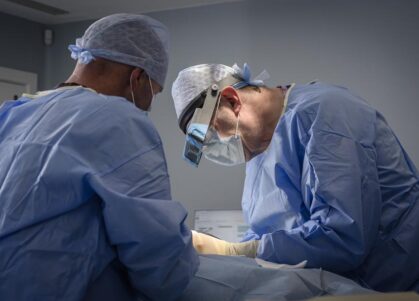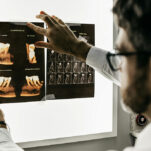Reconstructive Techniques
While other structures, such as nerves, may be involved, microvascular reconstruction surgery primarily focuses on blood vessels, as the name suggests.
Blood vessels in both the donor and recipient areas can be identified and matched with the appropriate tissues, whether skin, fat, muscle, or bone. The required structure is then transplanted alongside its corresponding blood supply.
In cases where an additional vein is needed to establish a new connection, a small incision in the arm or leg can provide a suitable vein. However, the priority remains the transfer of naturally occurring blood vessels along with the transplanted tissue.
This ensures the tissue remains viable after reconstruction, much like transplanting a plant with its roots intact—though with far greater precision and care.
Microvascular surgery is performed using a specialised operating microscope, essential for handling the ultra-fine sutures (stitches) required to reconnect delicate blood vessels.
A Well-Planned Procedure
Your consultant will have carefully reviewed your medical and surgical history, along with any necessary tests such as ECGs, X-rays, or blood tests. In complex cases, advanced planning may include 3D simulations or physical models.
The procedure will take place in a specialised surgical setting, with anaesthesia meticulously planned to ensure a pain-free experience. A detailed surgical plan ensures you benefit from the safest option in reconstruction—using your own tissue.
While transplanting tissue from another person is possible, this carries the risk of rejection or the need for lifelong immune-suppressing medication. With microvascular reconstruction, your own tissue is simply relocated within your body, avoiding these complications.
Modern microvascular surgery is remarkable, but success relies on meticulous planning, surgical expertise, and deep understanding. If you have any further questions about this key maxillofacial treatment, please don’t hesitate to contact our team.


